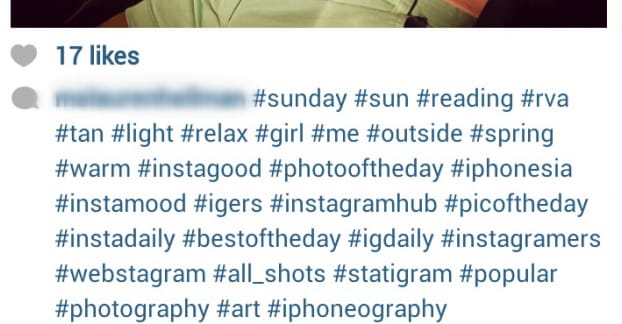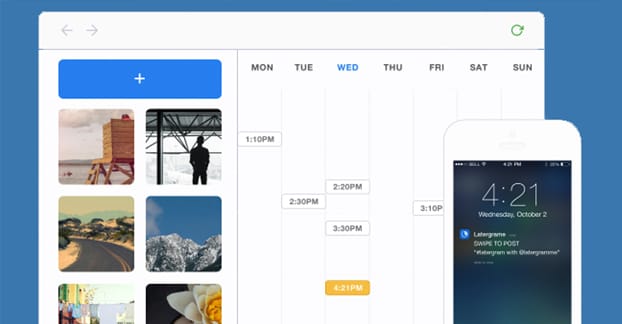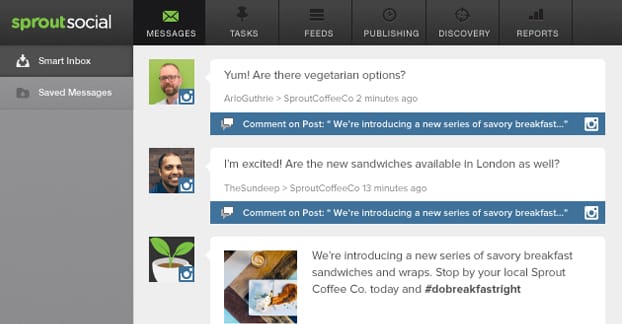Instagram as a platform is all about engagement. It’s limited in access, it’s limited in advertising, and it’s focused heavily on content designed to be engaging. You can’t really sell products directly through it, and you can’t do lengthy content marketing on the site either. You’re restricted in the length and depth of the content you post.
Everything, then, centers on the likes, comments, and shares you get from your followers. If you’re not getting many of those, you’re not making good use of the site. There are a lot of different reasons why you might not be earning the likes you need, but they generally boil down to these six causes.
1. Posting the Wrong Subjects
There are a few content rules on Instagram, mostly relating to banning obvious pornography, violent imagery, hate speech, and the like. If you wouldn’t show it to a kid in elementary school, you probably shouldn’t post it on Instagram. That’s not the kind of subjects I’m talking about, though.
Instagram’s greatest power comes with images that tell a story. A random picture of a sunset over a Wal-Mart parking lot isn’t interesting, but a sunset picture over a gorgeous beach is a lot better. Pictures of your meals aren’t interesting; pictures of well-presented meals at five-star restaurants are better. Pictures of your kids are generally boring – when was the last time your parents pulled out the photo albums? – but you can get them to work if they’re really well done.
Then you get some of the more inane or insane images. Just take a look at this post for a few examples. Here you can see trashy people, bad photoshop jobs, a stunning lack of common sense, and horrible memes. You’d be surprised at how many people take pictures and post them when they’re in accidents or otherwise hurt; the urge to share is stronger than the urge to get help.
Most of these aren’t likely from a business, but a few might be. Avoid the urge to post memes unless you’re very familiar with the meme and meme cycles online. If you can’t guarantee that the meme is relevant and trending, and that your audience will be interested to see it, don’t post it.
Almost any subject can be done well and can earn a lot of engagement. At the same time, every subject can be overdone and drive users away. You could have the most photogenic child in the world, but if you’re posting 10 times an hour about it, you can bet I’m going to unfollow you. At that point, even great art is spam.
Instagram has some limitations on the text boxes associated with pictures. Each post can have up to 2,200 characters in their captions, and that’s the same character limit for comments. However, after about 240 characters, both captions and comments are truncated. This is incentive to keep descriptions short. Likewise, social pressure has proven that posts around 80-100 characters in length earn the most engagement.
You also have a limit of 30 hashtags per photo or comment, but that’s excessive. Maybe you can use 30, but you should rarely exceed 10, and often not even that. The more hashtags there are, the less interesting the comment is. As for mentions, you’re limited to 5. That’s not a lot, so feel free to use them. I like to consider mentions in the same category as hashtags, though; the more people I mention, the fewer hashtags I use. It’s worked out so far.
Mentions can be very powerful, primarily because of the new trend in marketing called influencer marketing. Interacting with high profile users and getting them to promote your content is proving to be very potent in terms of getting more awareness and more followers. It’s generally a good idea to mention people who have significant followings, but who aren’t Instagram superstars inundated with notifications. Find people who often post the kind of content you’re posting and mention them because you think they would like what you posted.
As for hashtags, well, they’re a very tricky subject, because anything can be a hashtag. There are three basic types of hashtags. One type is branded, which are hashtags you make up using brand names, product names, or other proper names attached to your brand. These are good for measuring engagement on an advertising campaign or a contest, but not so good for broadening awareness. One is generic hashtags, which are tags like #cute or #nofilter, which are browsed by random people and get your photos into general feeds. These are great to use, particularly if you find tags that aren’t too flooded with content but aren’t dead either.
The third kind of tag is the humor tag. These are like extensions to captions and can be quite amusing, but some people really don’t like them. It’s up to you if your brand can pull off using them. They tend to be extended, like full sentences with the spaces removed, so they eat into your character limit and are difficult to display without truncation. Think hard before you use them.
3. The Opposite of Slow and Steady
Buffer’s famous social media frequency guide indicates that the minimum post frequency a business should strive for is 1.5 posts per day. They note, however, that engagement and value continues to stay high as posts come more frequently, unlike with other social networks, where frequent posting tends to have diminishing returns. You can post 4 times a day and continue to see value from every one of those posts, with one caveat; you need to keep up the frequency. You can’t post on average once per day and then, on Friday, post 14 times. That kind of spike in activity is extreme and unnecessary.
In addition to maintaining a consistent schedule for posting, you also need to spread your posts out throughout the day. If you have four posts to make, consider the active hours of your audience, and spread those posts out equally amongst those hours. Sure, one of them will tend to fall during more peak hours than the others, but that’s just the nature of the game. You can’t post all four posts at once and expect them to get equal attention; people will be turned off by seeing you so often in their feeds, instead.
The ideal posting schedule for Instagram is a slow and steady pace. Something that keeps your posts in the feeds of your followers and the readers of the hashtags you use, without flooding them or making you appear several times in a row. The more you spread out your posts throughout the day, the better off you’ll be. Just make sure you’re not posting back to back unless your posts are related in such a way that users should see them next to each other in context.
4. Ignoring Comments
Engagement on a social network is not a one-way interaction, as much as it seems like it is. When a user likes your post, they’re expressing interest, sure. There’s not a good way to respond to that. However, when a user shares your post, you can step in and thank them for the share in a comment. This only works on some social networks, though. On Instagram, the number one form of engagement to which you need to respond is the comment.
Comments on Instagram photos come in a few forms. You have the blind thanks comments, or the emoticon replies. These are comments that don’t invite a response and are just like a “like” +1. If you try to thank someone for these comments, they’ll assume you’re a bot, just responding to every comment you get. It’s generally best to ignore them for the sake of your image.
Comments that leave a question or something more insightful as a caption than a simple emoticon reply are much better targets for encouraging further engagement. If a user asks a question, step in to answer it! If a user offers a caption, consider that caption and how it flows with your marketing. If a user takes the time to leave a suggestion, consider it and tell them that you’re doing so.
Some comments will be negative reviews of your product or company, or even just of your photo. These can be obnoxious spam, or they can be legitimate grievances with your company. In the former, just ignore them. For the latter, take the time to apologize and reach out to the commenter to try to make things right. You won’t always be able to, but your efforts are public and show your company really tries.
Some comments are spam, and should be moderated or deleted as you see fit. If they’re suitably far down in your comments list, they might not be visible except when a user tries to read through all of your comments, which makes them just fluff that can be ignored. If they end up as the top comment, always visible, it’s a good idea to get rid of it.
5. Accidental Privacy
This is a simple mistake, and I see it sometimes as an issue with a setting that gets clicked accidentally, or a setting that holds over from when you’re setting up a profile before you want it to go live. If you create an account and make it private while you fill out the information and post a few introductory images, you need to make sure you bring the profile into the public eye.
You can’t keep an Instagram profile private and expect widespread engagement. It just can’t happen; a private profile means users need to request approval to follow you, and many users just won’t do that. Plus, your images won’t show up when you mention or hashtag them, except to people who already have been approved to follow you.
In general, there are very few reasons to make an Instagram profile private. Closing it down when it’s hacked and you need to recover, closing it down to rebrand or remove old content, or closing it down when you quit the site are good reasons. Any other reason is probably not good enough.
6. Posting Mediocre Content
Sometimes you can be doing everything right and getting nothing out of it. Why is this? What is happening? Well, chances are you’re just not posting good enough content.
What are the hallmarks of poor content on Instagram?
- Your images are overly filtered or washed out, or otherwise difficult to make out. Grainy images aren’t artistic, they’re poorly shot.
- You’re posting screenshots of apps, snapchats, or anything else with a phone interface overlaid on top of it.
- You’re posting bland, basic motivational quotes on top of boring images or flat colors. If you would see it on the wall of a classroom, don’t post it on Instagram.
- You’re posting memes that aren’t interesting or are out of date. Very few memes last longer than a few weeks in the spotlight, and if you’re consistently out of date with them, it shows how out of date your business is.
- You’re taking pictures of boring meals or boring children. Kids and food are two of the most over-done topics on Instagram, so you really need your photography to stand above the rest if you want them to shine.
- Don’t post out-the-window pictures from an airplane. Unless you’re a fighter pilot or you’re flying to a very, very exotic location, no one cares.
- You’re posting boring, samey pictures of the same subjects over and over. Pictures of cats are great, but 200 pictures of the same cat sleeping in slightly different positions in the same windowsill are redundant and spammy.
There are more, of course, but you can get away with the occasional dull picture. Everyone has their moments of failure, after all. You can’t predict how the world at large will view one image from the next; that unpredictability is the foundation of viral surges in traffic, after all. What you need to do is strive to post the best, highest quality pictures you can take. Avoid poorly edited photos, avoid poor quality photos, and avoid anything that seems overly cliché unless you’re subverting the cliché in some way. Stand out with high quality content, not high volumes of content.










Thank you. It’s critical to have likes on your photos!
Hey great post. I like that you ended the article with quality over quantity. Now I’m trying to get back in the game of posting more regular but it’s extremely difficult for me. If I’m curating a picture, making sure that everything lays beautifully and looks fantastic after the 500 shots, then I have to edit too, it’s extremely time consuming!!! If I’m creating my own content (literally as I’m in the beauty and arts category) it’s the most time consuming thing I think from ALLL other categories of insta. So I know that one of my biggest issue is posting consistently. I’m pestering quality WAAAY more than quantity. So do you have any suggestion to broaden my followers and visibility? I’m literally struggling with just over 100 followers, killing it for every follower but still no traction. While others somehow are just booming upwards with very little effort or many pics. I don’t get how others do way simpler and ordonery pictures but they get WAY more likes (per picture) and exposure. How does that work?? If you want to check my acc to see and maybe critique it’s lennimua Many thanks
Hi. I struggle with the same problem. I work hard to get quality pictures. And like you, I edit them. They are sharp, clear, with perfect light. I barely get 20 likes. Nobody seems to see my images! My number of followers goes up and down. Many people follow me only to unfollow in few days. It is frustrating. I think Instagram algorithm has also something to do with it. They screwed it up. I have no idea either what else to do. I followed the “rules” and tips. Nothing helps.
I struggle with this too! Spending a big amount of time in shooting with my DSLR, editing and coming up with informative and good captions for my photos, but nothing gives. Like you, I also see many accounts with bad quality pictures, bad photo skills and no text getting way more action and followers than me. I don’t get it and I don’t think it really changes anything to do what the article says above. Been doing that since I started two years ago and I’m still stuck with max 40 likes and around 360 followers. It’s frustrating!